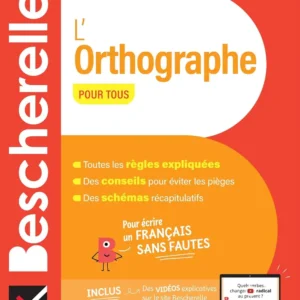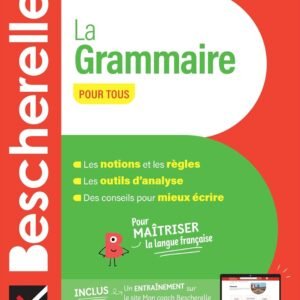Mastering French Logical Connectors: Boost Your Fluency and Clarity
If you’re looking to make your French sound more natural, fluid, and professionalwhether you’re speaking or writing, then you’ve come to the right place. Today, we’re diving deep into the world of logical connectors in French. These little linguistic gems can transform your sentences from choppy lists into smooth, coherent narratives.
As an expert in French language teaching, I’ve seen how mastering these can elevate your communication skills, making you stand out in conversations, emails, or even essays. In this comprehensive blog post, we’ll explore what logical connectors are, why they matter, and break down the main categories with plenty of examples. Plus, I’ll throw in a fun exercise at the end to test your knowledge. Stick around, and by the time you’re done, you’ll be weaving ideas together like a pro!
What Are Logical Connectors and Why Do They Matter?
Logical connectors, or “connecteurs logiques” in French, are words or phrases that link ideas, sentences, or paragraphs together. Think of them as the glue that holds your thoughts in place, showing relationships like sequence, contrast, cause, or effect. Without them, your French might come across as a disjointed series of statements, like reading a shopping list out loud. But with them, your expression becomes clearer, more organized, and easier for others to follow.
Why bother learning these? Well, using logical connectors demonstrates a strong command of the language. They help you avoid repetition, guide your listener or reader through your logic, and make your arguments more persuasive. Whether you’re chatting with friends, writing a business report, or preparing for a French exam, these tools can make your communication shine. In fact, studies on language acquisition show that connectors are key to achieving fluency, as they mimic how native speakers naturally structure their thoughts.
The Six Main Categories of French Logical Connectors
I’ve grouped the most essential logical connectors into six categories for easy learning. We’ll go through each one, with real-life examples to illustrate how they work. Remember, each connector ties two ideas together, creating flow and logic in your sentences.
Category 1: Adding or Organizing Ideas
Starting with the basics, these connectors help you sequence or add to your thoughts smoothly. A prime example is “ensuite,” which means “then” or “next.” For instance, “Nous avons visité le musée, ensuite, nous sommes allés au restaurant.” Here, the first idea (visiting the museum) leads naturally into the second (going to the restaurant), showing a clear progression. This type of connector is perfect for storytelling or giving instructions, as it keeps everything in order without feeling abrupt.
Category 2: Expressing Time
When you need to indicate timing or simultaneity, time-related connectors come into play. Take “pendant ce temps,” which translates to “meanwhile.” An example: “Pendant ce temps, je faisais mes devoirs. Pendant ce temps, mon frère regardait la télévision.” This shows two actions happening at the same time, adding depth to your narrative.
Another useful one in this category is “dès que,” meaning “as soon as.” Try this: “Dès que je pars et dès que j’arrive à la maison, je t’appelle.” It connects the ideas of leaving and arriving, emphasizing immediacy. These connectors are invaluable for describing routines or schedules, making your French sound more dynamic and precise.
Category 3: Expressing Opposition or Concession
Opposition connectors highlight contrasts or concessions, adding nuance to your arguments. “Tandis que” or “alors que” both mean “while” or “whereas.” For “tandis que”: “Mon ami jouait dehors tandis que je lisais un livre.” This contrasts two simultaneous but different activities.
Similarly, “alors que” works like this: “Elle lisait encore alors que tout le monde dormait.” It points out an unexpected continuation despite the circumstances. Moving on, “malgré” means “despite”: “Nous sommes allés nous promener malgré la pluie.” And “contrairement à” means “unlike”: “Elle adore les légumes, contrairement à son frère.” These are great for debates or comparisons, as they show you’re considering multiple sides.

Category 4: Expressing Cause
Cause connectors explain why something happens, building logical explanations. “À cause de” means “because of”: “Le match a été annulé à cause de la neige.” This directly links the cancellation to the weather.
“Puisque” is like “since”: “Tu peux m’aider à porter ces sacs puisque tu es là.” It assumes the cause is obvious. Then there’s “en effet,” which means “indeed” or “in fact”: “Il a refusé l’invitation. En effet, il était pris ce soir-là.” And “grâce à” means “thanks to”: “J’ai réussi mon examen grâce à ton aide.” Use these to justify actions or outcomes, making your reasoning crystal clear.
Category 5: Expressing Consequence
On the flip side, consequence connectors show results or effects. “Par conséquent” means “therefore”: “Il a oublié de mettre son réveil. Par conséquent, il est arrivé en retard.” This draws a direct line from cause to effect.
“Aussi” can mean “thus” or “therefore”: “Il a beaucoup travaillé. Aussi, il a obtenu de bons résultats.” These are essential for persuasive writing or speeches, as they help you conclude points strongly and logically.
Category 6: Expressing Condition
Finally, conditional connectors set up scenarios based on if-then logic. “À moins que” means “unless”: “Je viendrai à la fête à moins que je ne sois malade.” This introduces a condition that could change the outcome, perfect for planning or hypotheticals.
Wrapping It Up: Start Using Logical Connectors Today
There you have it, the essential logical connectors in French, broken down into six handy categories with examples to get you started. By incorporating these into your daily speaking and writing, you’ll notice your French becoming clearer, more fluid, and way more natural. Practice makes perfect, so try using them in conversations, journal entries, or even social media posts.
If you found this article helpful, give it a like, share it with friends learning French, and subscribe to OuiTeach for more grammar tips. Head over to ouiteach.com for ebooks and blog posts that expand on our videos. Tell us in the comments: What’s your favorite connector, or what grammar topic should we cover next? Thanks for reading, and à bientôt on OuiTeach!








